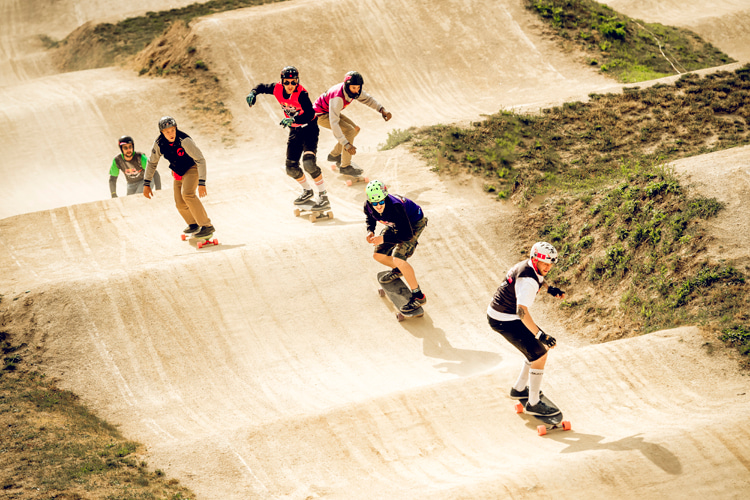A pump track is a specially designed circuit for recreational and competitive activities involving various types of wheeled equipment.
Pump tracks have their roots in the early days of BMX, which gained popularity in the United States in the 1970s.
The first structures were inspired by motocross tracks featuring rollers, berms, and rhythm sections that encouraged riders to "pump" their way through the course using their body movements rather than pedaling.
Over the decades, they have become popular with a wide range of wheeled sports enthusiasts, especially skateboarders.
Components
A pump track has several key components, including rollers, berms, and rhythm sections. Here's what they do:
- Rollers: These are small, rounded mounds of dirt or other material that are placed at regular intervals along the track. Riders use their body movements to generate momentum, or "pumping," as they move over the rollers;
- Berms: Berms are banked turns that help riders maintain their speed and control as they navigate the track. They are typically built with a sloping outer edge, allowing riders to lean into the turn;
- Rhythm Sections: These are a series of jumps, rollers, and other obstacles placed close together to challenge riders' skills and timing. A well-designed rhythm section tests a rider's ability to maintain speed and control while navigating the various elements;
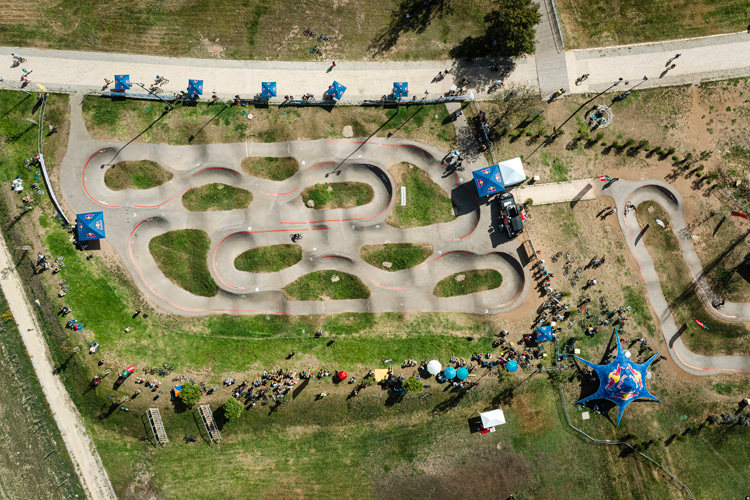
Architecture
Pump tracks can be constructed using several materials, such as dirt, asphalt, or prefabricated modular elements made of wood and fiberglass.
Each material has its advantages and challenges. Let's take a look at the different architectural options:
- Dirt: Dirt tracks are the most traditional and affordable option, as they can be built using locally sourced materials. However, they can be bumpy and uneven and require regular maintenance to prevent erosion and maintain their shape;
- Asphalt/Concrete: Asphalt and concrete tracks offer a more durable and weather-resistant surface, requiring less maintenance than dirt tracks. They're smooth to ride on and ideal for public parks and other high-traffic areas, but are more expensive to construct;
- Modular Fiberglass/Wood: These tracks are built using prefabricated elements that can be easily assembled, disassembled, and reconfigured. Modular tracks offer flexibility in design and can be easily transported and installed in various locations;
The design of a pump track should consider the skill level of the riders and the types of wheeled equipment that will be used.
Tracks should be designed with a continuous loop, allowing riders to practice their skills without stopping.
Additionally, the track should include multiple elements to challenge riders and encourage skill development.
On average, their size ranges from 400 to 1,000 square meters.
Alliance ASE, American Ramp Company, Clark & Kent Contractors, Skateboard Supercross (SBSX), TrailScapes, and Velosolutions are some of the leading pump track designers and developers.
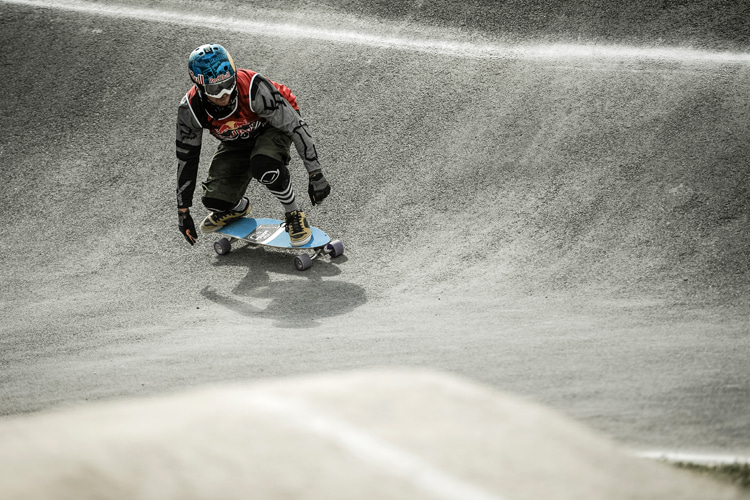
Types of Wheeled Equipment Allowed
Pump tracks cater to a wide range of wheeled sports, including:
- BMX Bikes: Pump tracks were originally designed for BMX racing, and these bikes are still a popular choice for riders. BMX bikes are lightweight, durable, and built for maneuverability, making them well-suited for these structures;
- Mountain Bikes: Mountain bikes are also commonly used on pump tracks, as their suspension systems can help absorb the impact of jumps and rollers;
- Balance Bikes: For young children, balance bikes are an excellent way to develop balance and coordination skills on a pump track. These bikes have no pedals, allowing children to focus on maintaining their balance while navigating the track;
- Skateboards and Scooters: Pump tracks can also accommodate skateboarders and scooter riders, who can practice their skills and enjoy the unique challenge of navigating the track's various elements;
- Inline Skates: Some pump tracks are designed to accommodate inline skaters, offering them a unique and challenging way to practice their skills and improve their fitness;
Strollers, tricycles, carts, wagons, and bikes with training wheels are normally not allowed on these circuits.
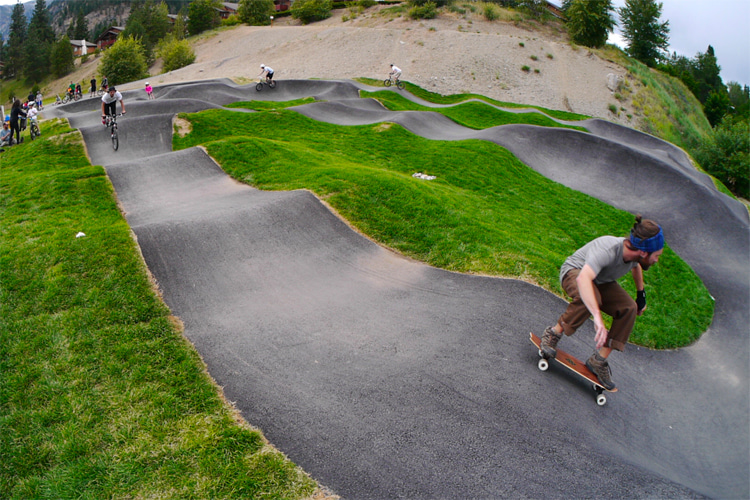
Riding a Pump Track 101
Skateboarding in a pump track is an unbelievably addicting and fun experience that people of all ages can enjoy.
It is also a fantastic workout that simultaneously develops and exercises your core and lower body.
Here's a simple step-by-step tutorial on how to ride a pump track on a skateboard.
Remember to practice regularly, respect other riders, and, most importantly, have fun. Follow the guide and start pumping now.
1. Choose the Right Skateboard
Select a skateboard that is well-suited for pump track riding.
A cruiser skateboard with larger, softer wheels and a wider deck is recommended for better stability and a smoother ride on the track.
2. Gear Up for Safety
Wear appropriate safety gear, including a helmet, knee pads, elbow pads, and wrist guards.
This will help protect you from injuries in case of falls or accidents on the pump track.
3. Familiarize Yourself with the Track
Walk around the pump track to get a feel for its layout, including the position of rollers, berms, and rhythm sections.
Take note of any challenging sections and plan your route accordingly.
4. Learn the Pumping Technique
To generate and maintain speed on a pump track, you need to master the pumping technique.
This involves shifting your body weight and bending your knees to create momentum.
Practice pumping on flat ground first by pushing down with your legs as you approach a roller and lifting up as you reach the top.
5. Start with a Gentle Push
Begin your ride by giving yourself a gentle push, ensuring that your feet are positioned correctly on the skateboard.
Your front foot should be slightly angled towards the nose, while your back foot should be perpendicular to the board, near the tail.
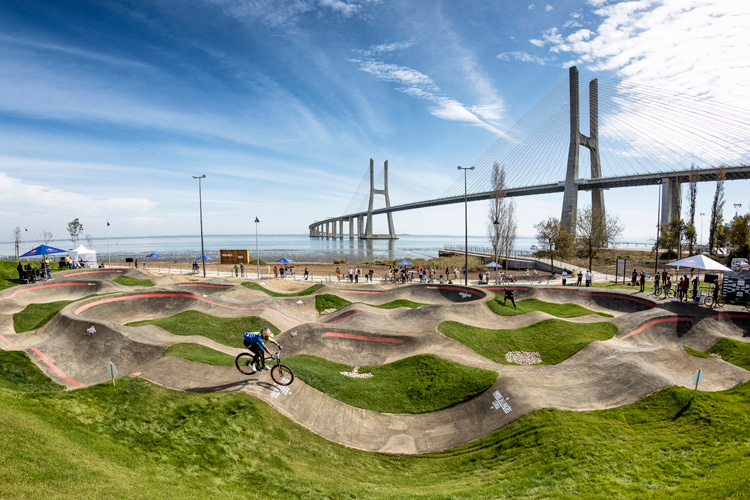
6. Approach the Rollers
As you approach the first roller, bend your knees and lower your center of gravity.
Push down with your legs to generate momentum, and lift your body weight as you reach the top of the roller.
7. Maintain Speed and Rhythm
Continue to pump your legs as you move through the rollers, rhythm sections, and berms.
Use your body weight to maintain your speed and control, leaning into turns and adjusting your balance as needed.
8. Practice Smooth Transitions
Focus on making smooth transitions between different sections of the pump track.
As you move from rollers to berms or rhythm sections, adjust your body position and weight distribution to maintain your speed and control.
9. Build Confidence and Skill
As you become more comfortable with the pumping technique and navigating the pump track, gradually increase your speed and experiment with different lines and approaches.
This will help you build confidence and improve your skills on the skateboard.
10. Respect Others on the Track
Always be aware of other riders on the pump track and give them space to ride safely.
Follow track etiquette by waiting your turn, yielding to faster riders, and being respectful of others' skill levels.
